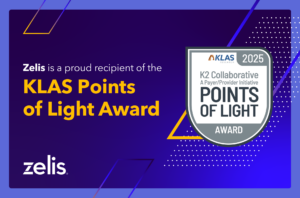
Kaitlin Howard is a researcher and writer producing insightful content across the healthcare revenue cycle. She has written and produced content for Zelis, Waystar, and Recondo Technology, as well as agencies. With a B.A. in English and Writing from University of Denver, Kaitlin stays current on market updates on claims management and healthcare payments, publishing a regular educational blog series on industry trends and Zelis offerings.
As we return to a “new normal” amidst the increase in access to the COVID-19 vaccine, consumers have also made a return to deferred care.
Unfortunately, gas and groceries aren’t the only price-tag getting a second look these days. Looking to accommodate higher healthcare costs, many U.S. consumers have been delaying (or altogether skipping) appointments.
According to a survey from West Health and Gallup, 38% of Americans (that’s roughly 98M people) have cut back on food, gas, utilities, and other necessities to help pay for healthcare expenses in the last six months. And while trade-offs were higher in lower-income households (those making less than $48K annually), nearly 20% of higher-earning households (those making more than $180K annually) were forced to cut back, as well.
But that’s not all.
Healthcare inflation climbed to 4.5% in June 2022 and was split into two major categories: medical care commodities and medical care services.
Those higher prices are driving around one in four (around 26%) Americans to avoid both medical care and prescriptions altogether.
That’s a problem, to say the least.
Current regulatory environment
Healthcare is becoming increasingly consumer-centric. There’s no secret there.
In fact, the No Surprises Act (NSA), signed into law in December 2020, seeks to protect patients from surprise medical bills and prohibits balance billing for certain out-of-network care.
And the Transparency in Coverage final rule, finalized by HHS and the Departments of Labor and Treasury in October 2020, aims to empower consumers to make informed decisions and foster price competition while driving costs down in the commercial market.
Simply put, both acts make a strong push for upfront communication regarding cost of services.
While the government is likely to continue issuing additional guidance (cue groans here), these regulations should simply be viewed as stepping stones towards a better, more affordable healthcare experience for us all.
The age old challenge(s)
Health literacy among consumers remains low.
Nearly 36% of adults in the U.S. have low health literacy.
Individuals with low health literacy experience greater healthcare use and costs compared to those with proficient health literacy. And through all its impacts (e.g., medical errors, increased illness and disability, loss of wages, and compromised public health), low health literacy is estimated to cost our economy up to $236B every year.
Member compliance and non-compliance drives costs.
The factors that impact a consumer’s decisions are multi-faceted. Yet one thing is for certain, we, as humans, desire the ability to make our own choices, and that includes healthcare (e.g., when to seek care, from whom, and for what). But healthcare is complicated and consumers are unsure how or where to find the right provider.
Member satisfaction is a slippery slope.
The advent and importance of member satisfaction as a driver of growth and retention via Net Promoter Score (NPS), click stream analytics, CSAT, and other measures has finally reached healthcare. But as these tools are deployed, they are revealing that member satisfaction is tricky to achieve and even harder to keep.
Member satisfaction is seemingly tied to having access to faster, easier answers with fewer decision points and is rooted in trust. Healthcare isn’t one-size-fits-all. Yet many organizations haven’t changed to reflect that.
A potential solution
As a healthcare organization, it is vital to innovate and employ platforms and solutions that increase cost transparency, healthcare shopping, and incentivized care navigation. But this can’t be addressed by point solutions alone.
Like healthcare consumers, health plans are entering a new environment in terms of pricing information. That’s why it’s important to engage with strategic partner vendors who can help you reach compliance and strengthen your competitive advantage, as well as give you the tools you need to help your members navigate their healthcare through data-driven shopping and transparency tools.
Once you partner with a vendor to help build out your products, services, and other compliance-related initiatives, you can then shift your focus to provide members with meaningful, individualized information, educating and encouraging them to make decisions based on more than price alone.
The wrap up
Rising inflation is fueling the need for more price transparency in healthcare. And both the NSA and TiC final rules will have long-term implications across the healthcare ecosystem.
Interested in how Zelis can help you go beyond the TiC and NSA mandates to help your members? Check out our latest playbook or connect with us here.




